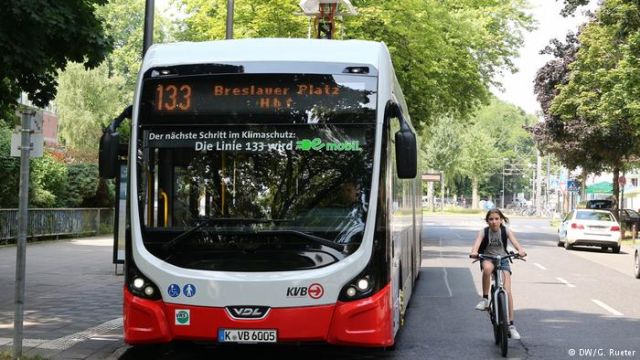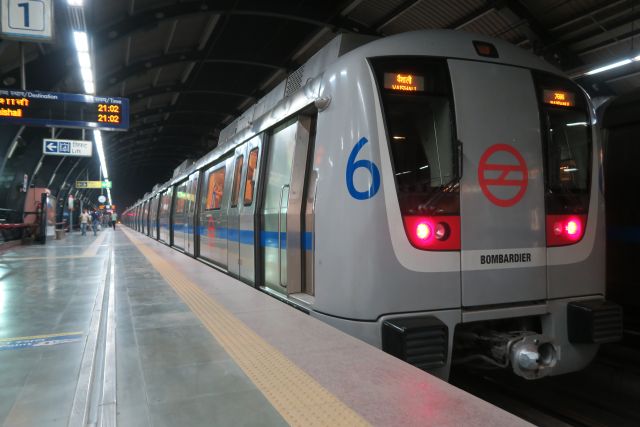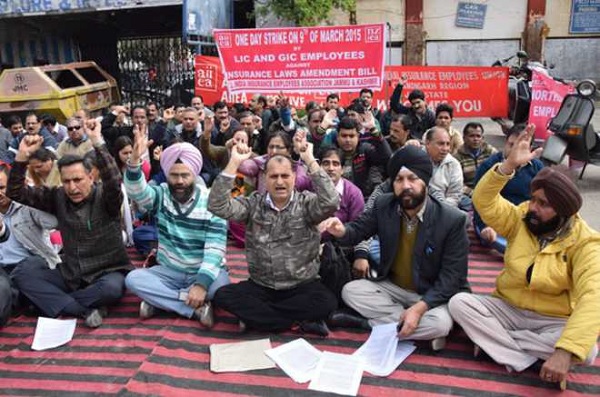
by admin | May 25, 2021 | World
 Berlin : The German government has made a proposal to introduce free public transportation as a radical measure to lower nitrogen oxide pollution in cities.
Berlin : The German government has made a proposal to introduce free public transportation as a radical measure to lower nitrogen oxide pollution in cities.
At least 20 major German cities continue to record nitrogen oxide pollution levels that exceed the EU limits and would be unable to correct the circumstance before 2020 according to a new report, Xinhua news agency said.
With the announcement on Tuesday, Berlin attempted to prevent any legal action against it by the European Commission for continually failing to comply with European Union (EU) urban air quality regulations.
Several courts in Germany were also independently mulling imposing a driving ban on diesel vehicles in the worst-affected cities.
The Federal Administrative Court in Leipzig is expected to deliver a potentially-far reaching verdict in this context on February 22.
Human exposure to nitrogen oxide emissions is associated with pulmonary diseases and is mainly caused by older diesel-vehicles.
News magazine Politico cited a letter by acting Minister for the Environment Barbara Hendricks and others to EU Environmental Commissioner Karmenu Vella which outlined the plan.
“If necessary”, municipal and state governments should be supported financially in efforts to lower the number of private automobiles on their streets, the letter read.
How exactly the cost of the free public transportation would be covered though remained unclear.
The German government is also mulling a series of other proposals including “low emissions zones” for freight traffic to appease Brussels.
The measures are to be tested for their effectiveness first in small-scale experiments in five “model cities”.
The letter said a multi-billion euros program co-financed by the state and carmakers was already underway to improve urban air quality and that the issue was of the “highest priority” in Berlin.
Responding to the letter on Tuesday, the Association of German Transport Companies (VDV) expressed doubts over the economic viability of free public transportation.
The VDV told press that it saw the proposals “very critically”, given the need for taxpayers to cover around $15 billion dollars each year in revenue lost from ticket sales.
Other organisations highlighted the need to ensure that free public transportation would be introduced on a firm financial footing.
“Whoever wants cheap local public transportation has to be able to pay for it,” German Association of Cities ‘Staedtetag’ director Helmut Dedy said.
—IANS

by admin | May 25, 2021 | World
 Beijing : China is looking to establish a service system for barrier-free transport by 2020, according to the Ministry of Transport (MOT).
Beijing : China is looking to establish a service system for barrier-free transport by 2020, according to the Ministry of Transport (MOT).
A guideline on improving transportation services for the elderly and the disabled was jointly released Thursday by the MOT, the Ministry of Housing and Urban-Rural Development, the China Disabled Persons’ Federation and four other departments, Xinhua reported on Saturday.
By 2020, barrier-free facilities should be established at all newly-built and rebuilt railway stations, service centres along expressways, airport terminals and other transport facilities, for the disabled and the elderly.
Post offices should make sure that any mails for the elderly and the disabled are delivered to their specific addresses, while new buses in cities with over 5 million citizens should be low-floor vehicles, the guideline reads.
Moreover, the guideline asks local governments to provide support in the forms of land and funds for the construction of barrier-free infrastructure.
It also asks for policies that allow guide dogs to get on public transport, and braille signs on public transport facilities.
—IANS

by admin | May 25, 2021 | Business, Economy, Large Enterprise, News, Politics

Nitin Gadkari
New Delhi : With logistics cost in India alarmingly high, the government is working towards lowering it by a third by developing coastal shipping and inland waterways as alternative modes of transport, Union Shipping Minister Nitin Gadkari said on Saturday.
In his address at “World Food India 2017” here, he said the logistics cost in India was as high as 18 per cent compared to China where it was between 8 and 10 per cent.
“We are trying to bring this cost down to around 12 per cent which would make Indian goods more competitive in the international market,” Gadkari said, adding that the government was prioritising coastal transport and inland waterways compared to road and rail mode as costs were significantly lower for the former.
“For every Rs 10 of transportation cost by road, it is Rs 6 for railways and only Rs 1 for waterways. That means you would be able to transport goods spending only 10 per cent of the current cost,” said Gadkari, who is also the Road Transport and Highways Minister.
“There are 111 rivers which we have decided to develop as inland waterways. Out of these, work has already started on 10 rivers,” he said. “These waterways will significantly reduce logistics cost.”
Even as the government was focusing on developing waterways, work was simultaneously being done at a fast pace to bring down logistics cost on roads as well, the minister said.
“We are going for electronic toll collection. Currently, Delhi to Mumbai takes 28 hours but soon, it will take only 18 hours because we are abolishing all state barriers. Now we will have e-toll collection and no one will be stopped for paying the toll tax, which will be charged automatically.
“This will lead to saving of 8-10 hours between Delhi and Mumbai,” Gadkari said.
“Our focus is also on logistics parks. We have already acquired land for 32 such parks and all major cities will have them,” he said.
Gadkari added that all logistics parks would be located outside the city where big trucks would arrive with goods, after which smaller vehicles would take those goods to different parts of the city based on requirement.
He said in the road sector alone, his target was to bring in investment worth Rs 25 lakh-crore during his tenure.
“We have already signed contracts worth over Rs 6 lakh-crore in road sector. Under Bharatmala project, we are expecting Rs 8-lakh-crore investment.
“I am confident that in two years, we will meet that target,” Gadkari said.
—IANS

by admin | May 25, 2021 | Opinions
 By Somrita Ghosh,
By Somrita Ghosh,
Delhi Metro cruelly killed my “acche din”.
Metro fares have been doubled in just four months, forcing me to give up my favourite mode of transport and take to crowded DTC buses.
Besides putting the new fares beyond my budget, I have also been stripped off the safety of travelling in the Metro. And I am not the only one.
My biggest shock came two days after the latest Metro fare hike. I commute daily between Green Park in south Delhi and Noida Sector 16 where I work.
As I punched my smart card while leaving the Sector 16 station, my heart skipped a beat — Rs 37 had been deducted from my card.
By the time I reached my office, the mental calculation was already done. I realised every month I would have to spend double of what I was shelling out only five months ago if I wanted to use the Delhi Metro.
When the year began, I was spending Rs 18 on my Metro ride — one way. The Metro then hiked the fares and my one-way cost shot up to Rs 27. The latest hike had taken it to Rs 37!
This was hard for me to digest. The sudden hike of almost Rs 20, that too one way, was surely going to painfully pinch my wallet.
When I landed in Delhi five years ago, my friends advised me to avail the Metro, not just because it is safe for women but comfortable too, never mind the crushing rush during peak hours.
Most important, as I realised very soon, the Metro was affordable. It was so cheap that while an auto-rickshaw would charge me a minimum of Rs 25 from my home to the nearest Metro station, the Metro charged me only Rs 18 all the way from south Delhi to Noida in Uttar Pradesh. This was too good to be true.
Since I came from Kolkata, where the minimum Metro fare was only Rs 4 and the maximum Rs 12, Delhi Metro initially seemed costly.
But I realised the full story in no time once I started using the Delhi Metro. The infrastructure, service and overall facilities provided by Delhi Metro were far better compared to Kolkata.
Delhi Metro offers free WiFi, its stations have coffee shops and the bigger ones even host fast food chains. Travel is hassle-free despite the odd technical snags that hit the Blue Line that I use.
But suddenly charging a salaried person like me Rs 40 more, or Rs 1,200 a month, just because the Metro needs to finance itself better is something I cannot appreciate.
Like numerous others, I have changed my mode of transport. It is now the DTC buses. The DTC’s frequency may not match the Metro’s and DTC rides can be bumpy too, not to talk of unending traffic jams. But do I have a choice?
(Somrita Ghosh is a reporter with IANS. The views expressed are personal. She can be contacted at somrita.g@ians.in)
—IANS

by admin | May 25, 2021 | Corporate Jobs, Economy, Employment, Government Jobs, News
 New Delhi:(IANS) Essential services, including transport and banking are likely to be affected on Wednesday (today) with 10 central trade unions going on a nationwide strike.
New Delhi:(IANS) Essential services, including transport and banking are likely to be affected on Wednesday (today) with 10 central trade unions going on a nationwide strike.
Taxi and auto drivers will also participate in the protest, All India Trade Union secretary, D.L. Sachdev told IANS here on Tuesday.
“Over 15 crore people would go on strike in the country to protest against the government’s anti-worker policies,” he claimed.
Over 90,000 auto-rickshaws and 15,000 taxis are expected to go off the road in the national capital, said Sanjay Chawla, who had mobilised about 40,000 auto drivers to support ruling Aam Aadmi Party (AAP) before elections.
He said 2.5 lakh posters have been put up across Delhi in support of the strike.
Sachdev said flights might also get delayed as aviation fuel supply was likely to be affected. He said the other sectors that would be impacted include coal, port and docks, steel, oil and gas supply.
All India Bank Employees’ Association (AIBEA) general secretary C.H. Venkatachalam said, “Across the country about 500,000 bank workers and officers would participate in the strike. About 75,000 branches will not work tomorrow.”
“Employees of the public sector, old private sector, cooperative and regional rural banks will take part in the strike,” he added.
However, employees of State Bank of India (SBI) and Indian Overseas Bank are not participating in the strike.
He said refilling of currency notes at automatic teller machines (ATM) by bank employees will also be affected.
“In those ATMs where refilling of currency note operation have been outsourced, the strike will impact them as well as the ATMs may go dry fast,” he added.
Sachdev said the government was offering Rs. 7,100 per month as the minimum wage, but the unions stick to their demand of enhancing it to Rs.15,000 a month as the government was not accepting the demand for equal wages for contractual workers at par with regular workers.
Bharatiya Mazdoor Sangh (BMS) and National Front of Indian Trade Unions, however, have decide not to participate the strike, citing “positive response” of the government.
The unions have called the strike to seek their representation in the labour reform process and wages to contractual workers at par with regular workers, apart from increasing the stipulated minimum wages to Rs.15,000.
In the financial services sector, employees of government-owned Life Insurance Corporation of India (LIC) and four non-life insurance companies would also be participating in the strike.
“Unions representing class 3 and 4 category of employees in LIC and the four non-life insurers have given the strike call,” J.Gurumurthy, vice president, All India Insurance Employees Association (AIIEA) told IANS.
The government on Tuesday urged the central trade unions to call off their countrywide strike on Wednesday. “I appeal to them to reconsider the call of strike in the interest of the workers and the nation,” Union Labour and Employment Minister Bandaru Dattatreya told reporters here.
Last week, the trade unions and a group of ministers led by Finance Minister Arun Jaitley had met twice.
Dattatreya said the government responded positively to nine out of the 12 demands, while no consensus was reached on the remaining.

 Berlin : The German government has made a proposal to introduce free public transportation as a radical measure to lower nitrogen oxide pollution in cities.
Berlin : The German government has made a proposal to introduce free public transportation as a radical measure to lower nitrogen oxide pollution in cities.



